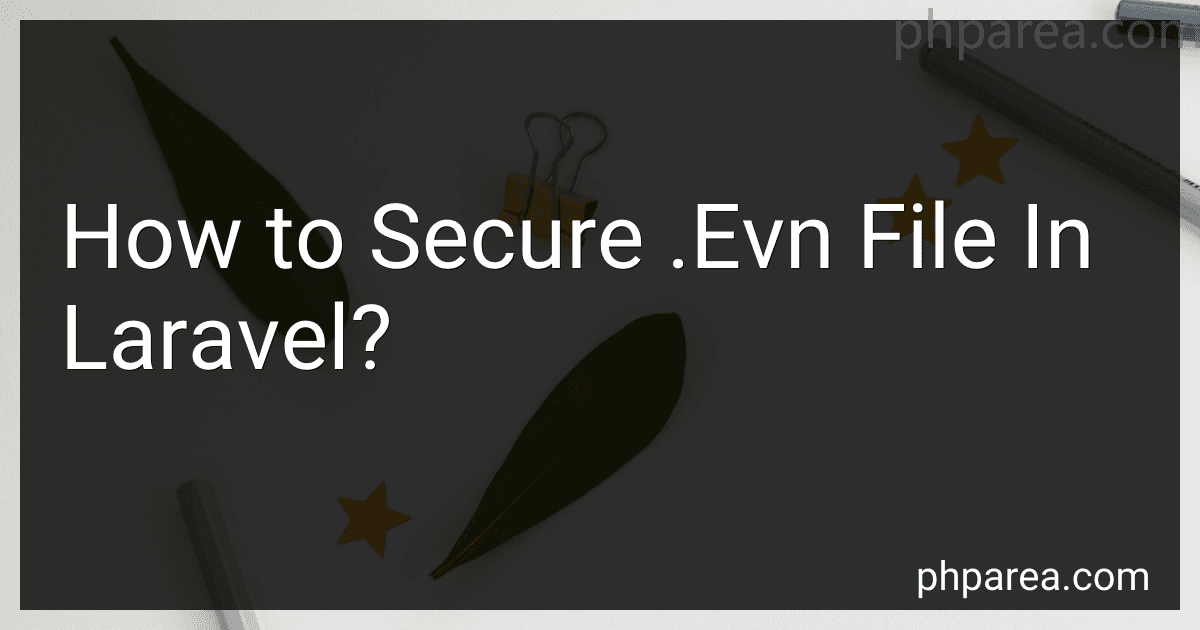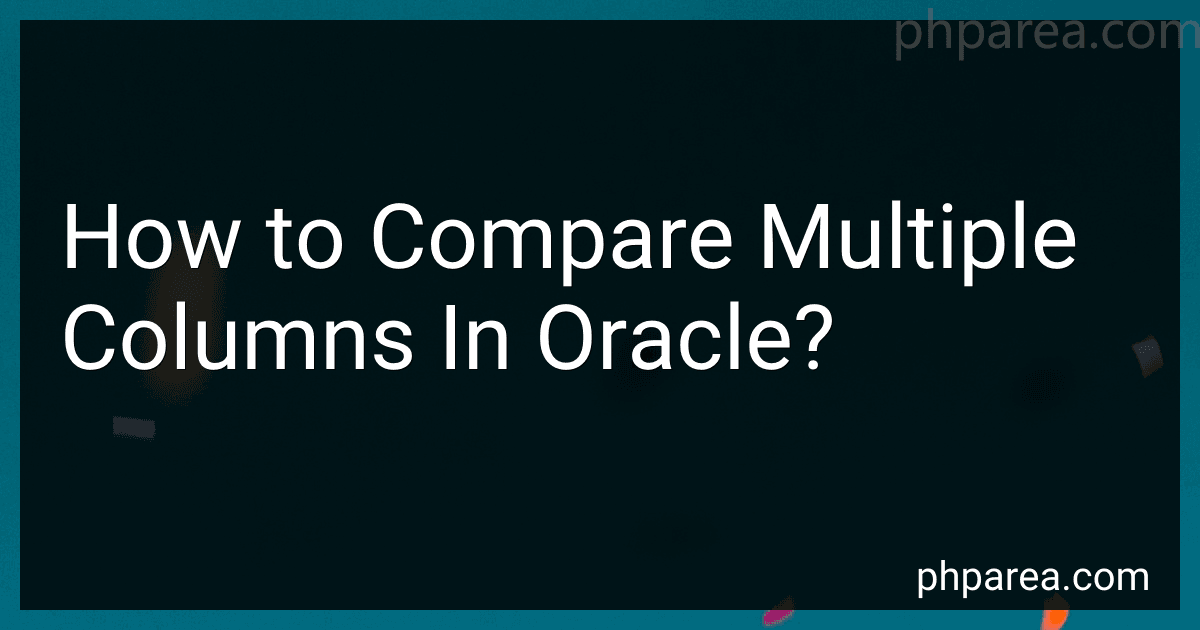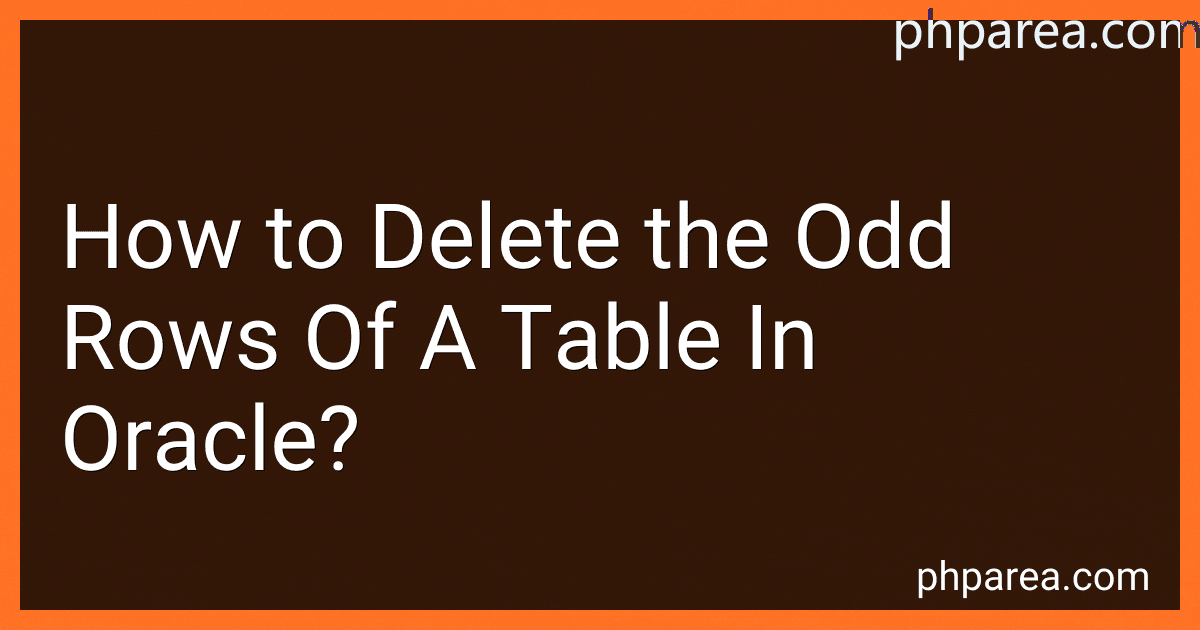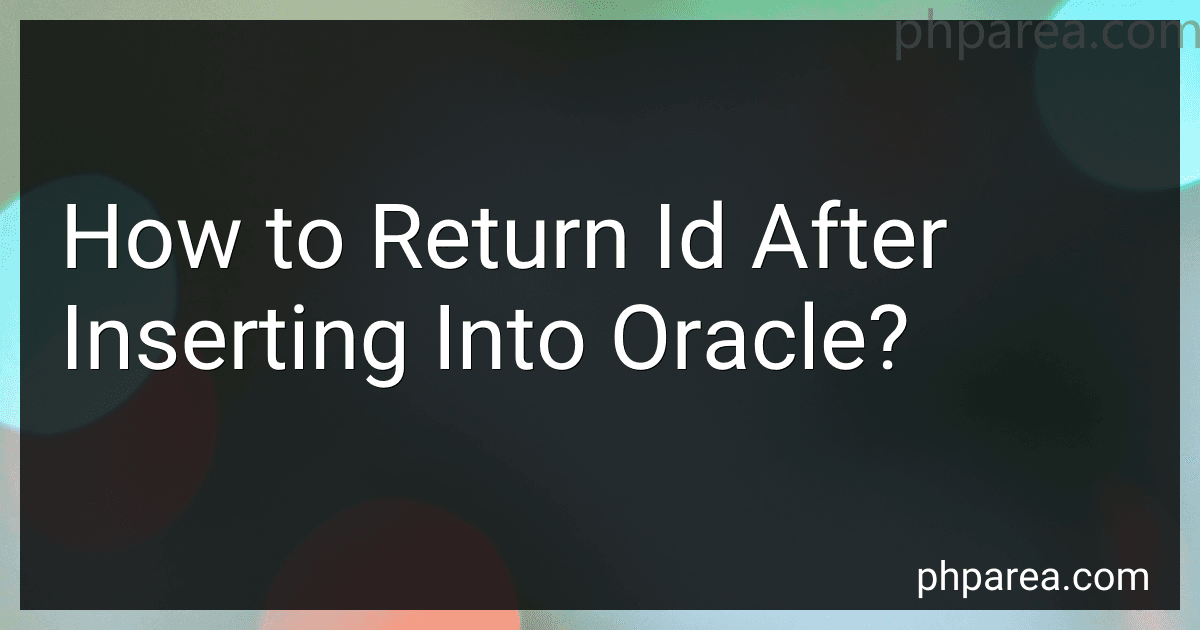Posts (page 21)
-
 4 min readTo update an array field in Laravel, you can use the update method on the model and pass in the new array of values. For example, if you have a model called User with a field called roles that is an array, you can update it like this: $user = User::find(1); $user->update([ 'roles' => ['admin', 'user'] ]); This will update the roles field for the user with ID 1 to be an array containing 'admin' and 'user'.
4 min readTo update an array field in Laravel, you can use the update method on the model and pass in the new array of values. For example, if you have a model called User with a field called roles that is an array, you can update it like this: $user = User::find(1); $user->update([ 'roles' => ['admin', 'user'] ]); This will update the roles field for the user with ID 1 to be an array containing 'admin' and 'user'.
-
 6 min readTo secure the .env file in Laravel, you can start by moving the .env file outside of the web root directory to prevent direct access. You can also restrict file permissions to ensure that only the necessary users or processes have access to read or write the file.Another way to secure the .env file is to encrypt sensitive information within the file using encryption algorithms provided by Laravel or third-party packages.
6 min readTo secure the .env file in Laravel, you can start by moving the .env file outside of the web root directory to prevent direct access. You can also restrict file permissions to ensure that only the necessary users or processes have access to read or write the file.Another way to secure the .env file is to encrypt sensitive information within the file using encryption algorithms provided by Laravel or third-party packages.
-
 5 min readIn Laravel, sessions can be accessed through the session helper function or the request object. To access sessions using the session helper function, you can use methods like put, get, and forget. The put method is used to store data in the session, the get method is used to retrieve data from the session, and the forget method is used to remove data from the session.To access sessions using the request object, you can simply use the request() method to retrieve data from the session.
5 min readIn Laravel, sessions can be accessed through the session helper function or the request object. To access sessions using the session helper function, you can use methods like put, get, and forget. The put method is used to store data in the session, the get method is used to retrieve data from the session, and the forget method is used to remove data from the session.To access sessions using the request object, you can simply use the request() method to retrieve data from the session.
-
 8 min readWhen performing bulk inserts in Oracle, the best way is to use the PL/SQL bulk collect feature along with the FORALL statement.Bulk collect allows you to select multiple rows of data from a cursor into collections, which can then be processed in bulk using the FORALL statement. This method significantly reduces the number of context switches between the PL/SQL engine and the SQL engine, leading to improved performance.
8 min readWhen performing bulk inserts in Oracle, the best way is to use the PL/SQL bulk collect feature along with the FORALL statement.Bulk collect allows you to select multiple rows of data from a cursor into collections, which can then be processed in bulk using the FORALL statement. This method significantly reduces the number of context switches between the PL/SQL engine and the SQL engine, leading to improved performance.
-
 7 min readIn Oracle SQL, you can manipulate the "if condition" in a procedure using the IF-THEN-ELSE statement. This statement is used to execute a block of code if a certain condition is met, otherwise it will execute another block of code.To use the IF-THEN-ELSE statement in a procedure, you need to specify the condition that you want to check. If the condition evaluates to true, the code inside the IF block will be executed.
7 min readIn Oracle SQL, you can manipulate the "if condition" in a procedure using the IF-THEN-ELSE statement. This statement is used to execute a block of code if a certain condition is met, otherwise it will execute another block of code.To use the IF-THEN-ELSE statement in a procedure, you need to specify the condition that you want to check. If the condition evaluates to true, the code inside the IF block will be executed.
-
 5 min readTo compare multiple columns in Oracle, you can use the logical operators such as AND, OR, and NOT along with comparison operators like =, <>, >, <, >=, and <=.You can use the SELECT statement to compare multiple columns in a table by specifying the columns you want to compare in the WHERE clause.
5 min readTo compare multiple columns in Oracle, you can use the logical operators such as AND, OR, and NOT along with comparison operators like =, <>, >, <, >=, and <=.You can use the SELECT statement to compare multiple columns in a table by specifying the columns you want to compare in the WHERE clause.
-
 3 min readWriting an Oracle query involves using SQL (Structured Query Language) to retrieve data from an Oracle database. Oracle queries begin with the SELECT statement, followed by the columns to retrieve data from, the table(s) to query, and any conditions to filter the results. The FROM clause specifies the table(s) to query, the WHERE clause filters the results based on specified conditions, and the ORDER BY clause sorts the results.
3 min readWriting an Oracle query involves using SQL (Structured Query Language) to retrieve data from an Oracle database. Oracle queries begin with the SELECT statement, followed by the columns to retrieve data from, the table(s) to query, and any conditions to filter the results. The FROM clause specifies the table(s) to query, the WHERE clause filters the results based on specified conditions, and the ORDER BY clause sorts the results.
-
 5 min readTo delete the odd rows of a table in Oracle, you can use a combination of the ROWID pseudo column and the MOD function. You can first select the odd rows by using the following query:SELECT * FROM table_name WHERE MOD(ROWID, 2) = 1;This query selects all rows where the ROWID value is odd.
5 min readTo delete the odd rows of a table in Oracle, you can use a combination of the ROWID pseudo column and the MOD function. You can first select the odd rows by using the following query:SELECT * FROM table_name WHERE MOD(ROWID, 2) = 1;This query selects all rows where the ROWID value is odd.
-
 4 min readIn Oracle, the equivalent of SQL Profiler is a tool called Oracle Trace or Oracle Trace File Analyzer (TFA). This tool allows users to capture and analyze SQL statements and other activities happening in an Oracle database. It provides detailed information about the performance of SQL queries, database operations, and system events. Oracle Trace is a powerful tool for monitoring and troubleshooting Oracle databases, similar to SQL Profiler in Microsoft SQL Server.
4 min readIn Oracle, the equivalent of SQL Profiler is a tool called Oracle Trace or Oracle Trace File Analyzer (TFA). This tool allows users to capture and analyze SQL statements and other activities happening in an Oracle database. It provides detailed information about the performance of SQL queries, database operations, and system events. Oracle Trace is a powerful tool for monitoring and troubleshooting Oracle databases, similar to SQL Profiler in Microsoft SQL Server.
-
 3 min readTo return the ID after inserting into Oracle, you can use the RETURNING clause in your SQL insert statement. This clause allows you to retrieve the value of the ID column immediately after inserting a new row into the database.
3 min readTo return the ID after inserting into Oracle, you can use the RETURNING clause in your SQL insert statement. This clause allows you to retrieve the value of the ID column immediately after inserting a new row into the database.
-
 4 min readTo parse XML data from a CLOB in Oracle, you can use the XMLType constructor to convert the CLOB into an XMLType object. Once you have the XMLType object, you can then use XML functions and methods to extract and manipulate the data within the XML document. For example, you can use XPath expressions to navigate the XML structure and retrieve specific elements or attributes. Additionally, you can use XMLQuery or XMLTable to extract data from the XML document and store it in a relational format.
4 min readTo parse XML data from a CLOB in Oracle, you can use the XMLType constructor to convert the CLOB into an XMLType object. Once you have the XMLType object, you can then use XML functions and methods to extract and manipulate the data within the XML document. For example, you can use XPath expressions to navigate the XML structure and retrieve specific elements or attributes. Additionally, you can use XMLQuery or XMLTable to extract data from the XML document and store it in a relational format.
-
 3 min readTo create an XML from an Oracle command in C#, you can use the OracleDataReader class to read the data from the Oracle database and then use XmlTextWriter class to write the data to an XML file.First, establish a connection to the Oracle database using the OracleConnection class and create an OracleCommand object with the SQL query that retrieves the data you want to convert to XML. Execute the command using the ExecuteReader method to get the data in a reader object.
3 min readTo create an XML from an Oracle command in C#, you can use the OracleDataReader class to read the data from the Oracle database and then use XmlTextWriter class to write the data to an XML file.First, establish a connection to the Oracle database using the OracleConnection class and create an OracleCommand object with the SQL query that retrieves the data you want to convert to XML. Execute the command using the ExecuteReader method to get the data in a reader object.